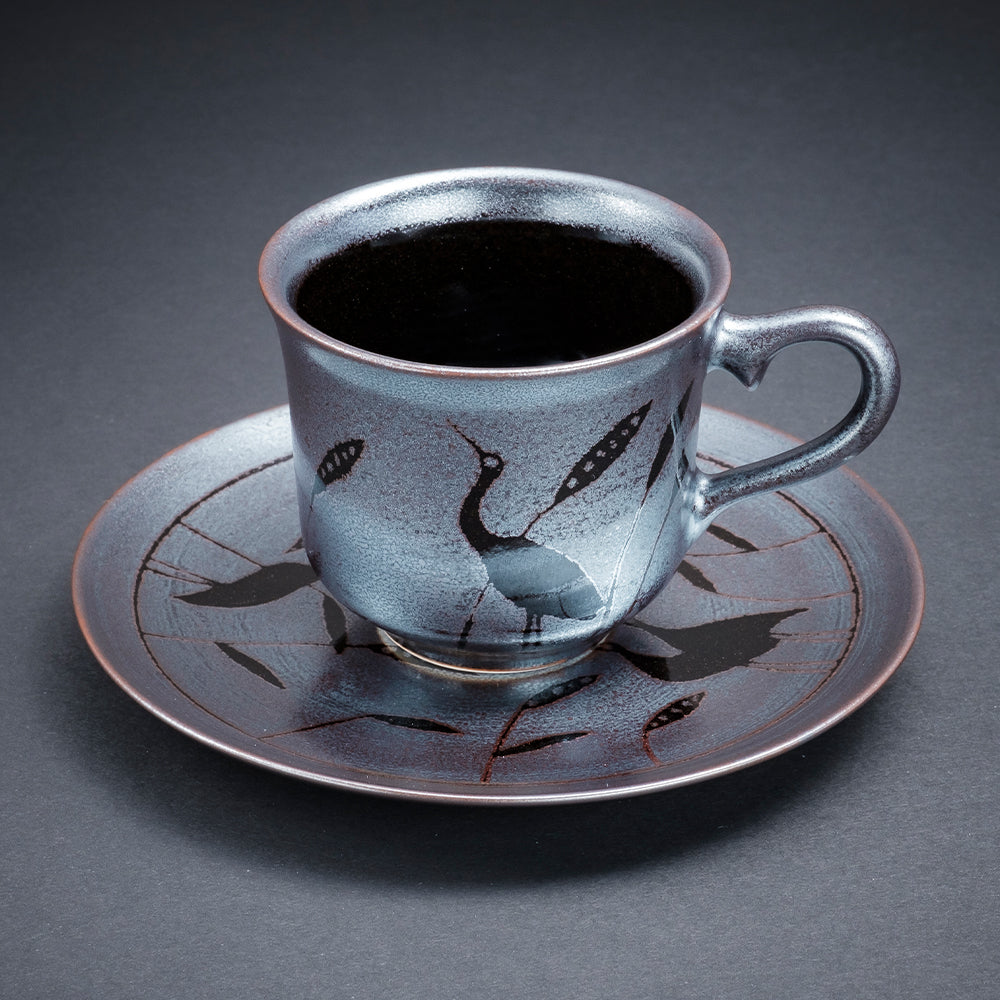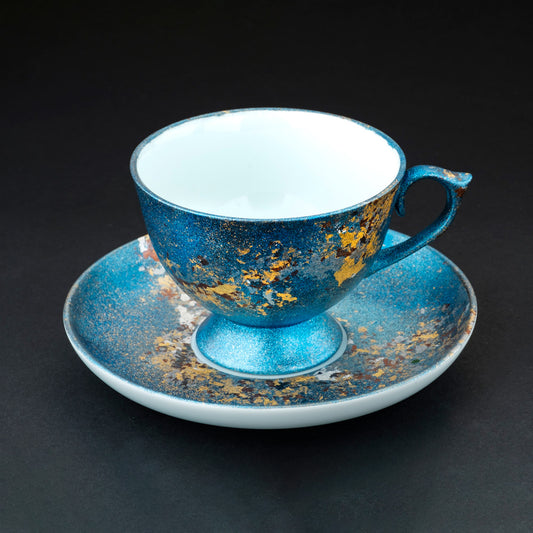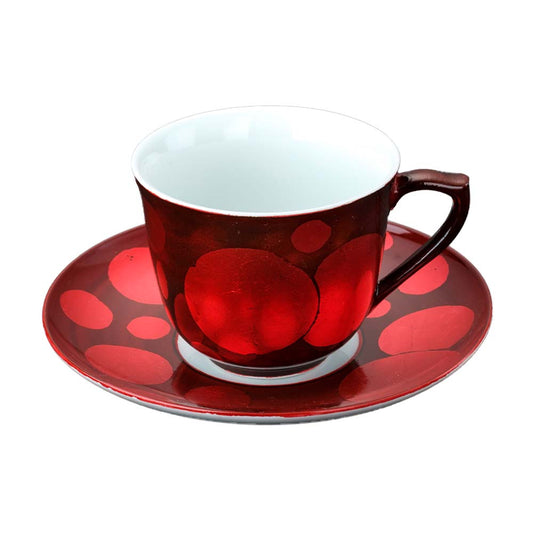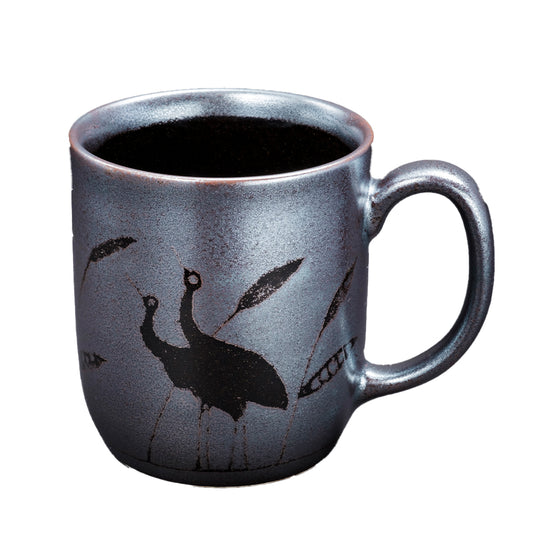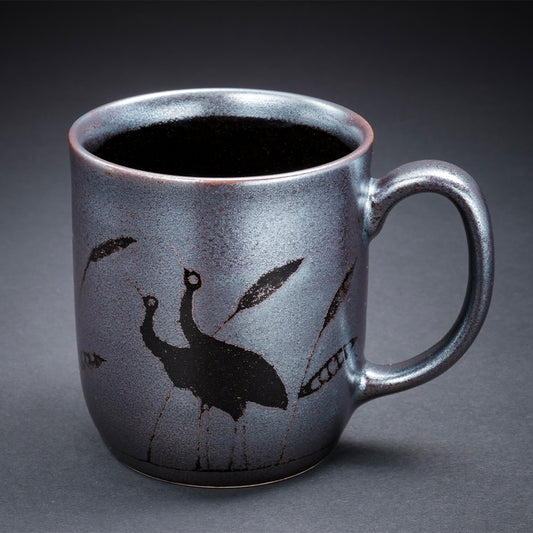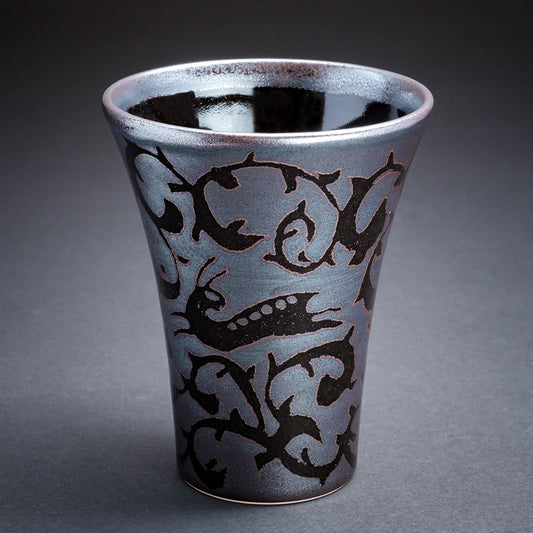- The unique Kinrande technique of Kozan kiln
Kinrande technique has a long history in China, starting from Jingdezhen in Ming Dynasty (1522-1566). It has also been handed down to Arita porcelain in Japan.
The Kinrande technique of the Kozan kiln is the most exquisite and luxurious way of painting patterns on porcelain by applying Urushi and pressing various kinds of foils. This is a unique Kinrande technique that has been handed down only to the present day by the Kozan kiln.
The gold brocade works, backed by the gorgeous beauty and historical traditional techniques, have an overwhelming presence in Arita porcelain.
The Kinrande produced by the Takumi (the craftsman) is not only gold foil, but also platinum foil, blue sea shell foil, red sea shell foil, and many other colors of foil. It is a work of art that can be described as "Hakuyui," using those various colored foils to create a picture.
We hope that you will enjoy the elegance and grace, massiveness, and glitter of it, just like a Yamato-e painting. - The time spent with the cup nurtures its flavor.
The Kinrande foil peels off with use and age. The color of Kinrande changes with time, and the taste of Kinrande increases.
It is not the pinnacle of beauty when it is completed, but a cup that grows with the user. And it is a real gem that accompanies you throughout your life, a treasure that you want to share your life with.
Kozan kiln (Kozangama) was founded in 1925 by Mr. Ono Kozan as a porcelain manufacturer.
Since then, it has been a traditional Aritayaki pottery kiln that has been introducing new modern techniques one after another to a wide range of society through its ingenuity.
The techniques include gorgeous decoration with high-fired glazes, Tenmoku silver painting, colored painting, and overglaze painting with gold and silver leaf, etc.
In addition to more advanced techniques, the pottery continues to develop a rich and unique world.
Tenmoku Ginsai is a process of glazing an unglazed vessel with Tenmoku glaze, drawing patterns with water wax, and then glazing it with silver glaze and firing it. Each camel, heron, and arabesque rabbit pattern is hand-painted by a craftsman. The profound silvery luster of the Tenmoku Ginsai works and the quiet, exotic and ethereal world will fascinate you.
While I have been making pottery at the Kozan kiln(Kozangama), I have been particularly attracted by the charm of "Kinrande" and have been working with it.
Kinrande is an extravagant technique in which lacquer is applied to porcelain and then foil is pressed onto it as an adhesive to create patterns. Brocade has a long history in China, starting in Jingdezhen during the Ming Dynasty (1522-1566).
As the name suggests, gold brocade mainly uses gold leaf, but in addition to gold leaf, my works use a variety of colored foils such as platinum, blue shell, and red shell to create patterns with foil. I hope you can feel the gravity and glitter of my work.
Please note that the foil will peel off with time and the degree of use.
Sincerely yours
Please wash by hand and avoid soaking or using boiling water. Avoid using electrical appliances (microwave ovens, toasters, ovens, dishwashers, etc.), sponges, tape, and direct sunlight.
As you use the product, the foil will peel off little by little. This is called "aging" and is the fate of gold brocade. We hope you will enjoy this change and use it as your favorite.
| In 1949 | Born in Ureshino City |
|---|---|
| In 1973 | Joined Kozan kiln |
| In 2003 | Began participating in public exhibitions. He has won prizes and awards at the Kyushu-Yamaguchi Ceramic Exhibition, the Western Craft Exhibition, the Saga Prefecture Art Exhibition, and the Saga Prefecture Art Association Exhibition. |
In 2012, she started to learn the gold brocade technique under Tatsuro Ono (her father). In 2012, she began studying gold brocade techniques under Tatsuro Ono (her father), and also received training in dyeing and red painting as the next head of the Huangsan Kiln.
She has also studied Tenmoku Ginsai under her uncle, Takaharu Ono, since 2015.
Showing 16 of 16 products










